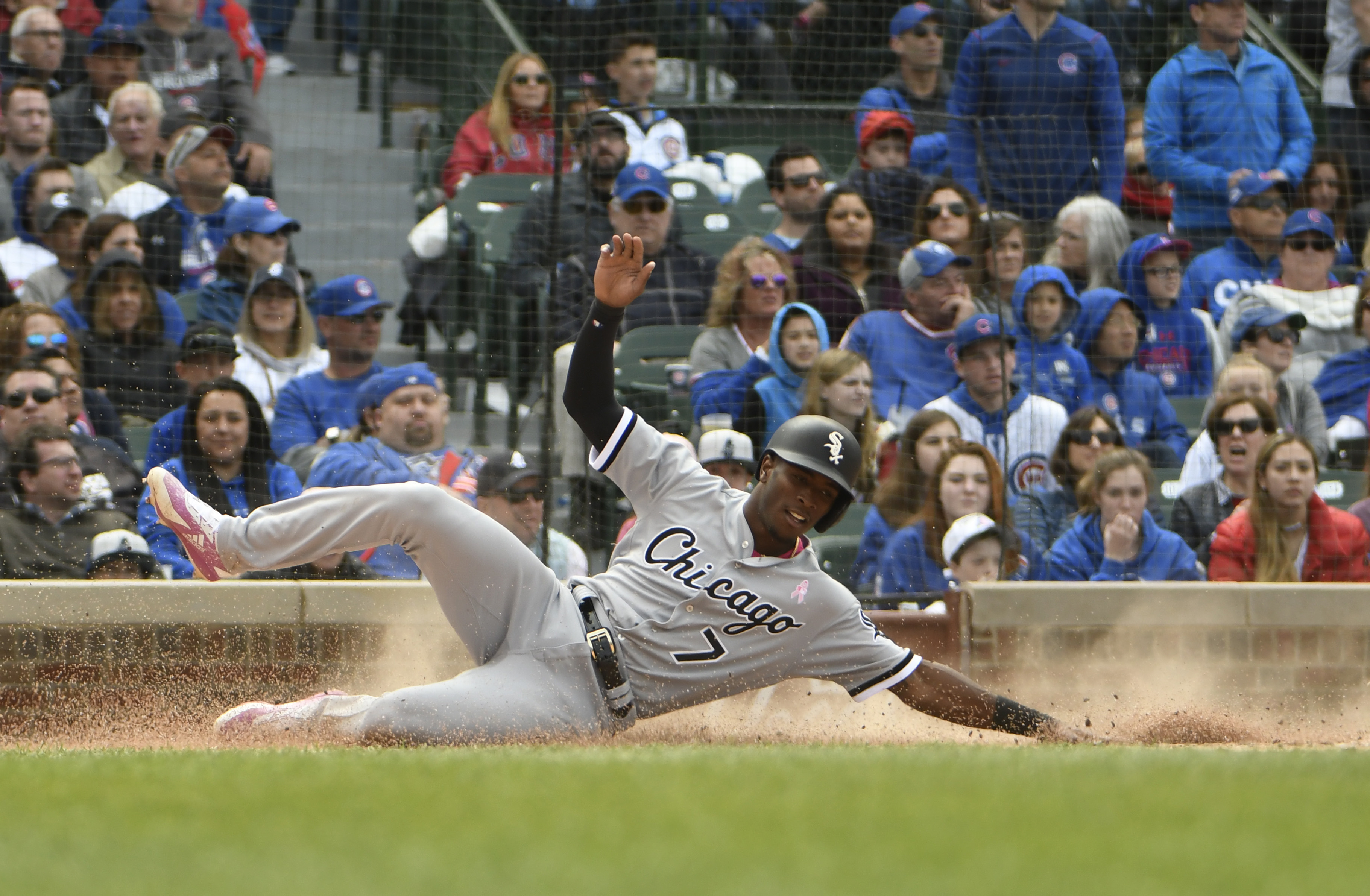As you’ve read in this space repeatedly, for all of the excitement around the new and newer prospects in the system, the White Sox Rebuild will turn largely on how some players already in house progress, with Tim Anderson representing just such a crucial class of player. It seems fair to describe his rookie season as a pleasant surprise, with 2017 being a disappointing, if understandable, sophomore slump. Here we are in Year 3 of Tim Anderson: Major Leaguer. He’s been extended through 2022 with team options to 2024. How’s he doing?
A .237/.298/.432 line doesn’t jump out at you. I suppose if an elite defensive catcher hit like that he’d be an All Star, but Anderson remains a range-y, cannon-armed, gaffe-prone shortstop. The metrics on his glove vary (FRAA hates him, UZR loves him) but to my eyes its the same profile as it has been for some time: he is a plus defender if he cuts the errors down. Easier said than done, of course, but his glove is serviceable at present if not an asset and there’s no visibly discernible reason he cannot get better. That said, there’s reason for a lot of optimism in that batting line if you dig a little deeper, though.
For starters, his power is legit, with a career-high .194 ISO coming in a season where he’s been hitting in frigid weather and the balls are reportedly no longer juiced. And, while he hasn’t done the historic volte face as Matt Davidson in terms of turning around his zone control, he’s made real gains in that area all the same in 2018. After registering K/BB percentages of 27.1/3.0 and 26.7/2.1 in 2016 and 2017 respectively, so far he is at a very respectable 23.0/7.9 this year. For reference, Anderson’s BB% was the worst in the majors last year, below even Alcides Escobar and Brandon Phillips. While 7.9 is hardly Vottovian, last year it would have registered somewhere between good hitters like Robinson Cano and Jose Ramirez. So far, major league hitters are collectively striking out at a 22.6% clip against an 8.9% walk rate. Meaning, Anderson–a super toolsy, potentially plus defensive shortstop with power and speed–has gone from The Worst Zone Control to League Average.
That’s huge.
As it stands now, he’s roughly a league average hitter who can handle shortstop and might be good there…and that’s while getting unlucky. Armchair analysts frequently oversimplify and overuse BABIP as a 100% proxy for luck. As years have gone on, we’ve learned more and more about pitchers’ and hitters’ disparate abilities to “deserve” better or worse fortune on balls in play. But even with that caveat, a player as fast as Anderson who is hardly all pop-ups and dingers should be comfortably 30-40 points above his current .268 BABIP. Meaning his line could look more like .260/.325/.460 with even modest fortune on batted balls.
Throw in his elite baserunning — Baseball Prospectus’ metric has him tied for eighth in all of baseball in terms of value added on the base paths, which includes more than just stolen bases — and this is already a roughly league average player and maybe a little better at a valuable position. That’s without him doing anything more than he already is. And, as is apparent from the stat sheet and the eye test, there’s room for more here.
To see how important being able to get solid regulars from your first round picks, look no further than the White Sox from 2008-2016. The justification for teams to “tank” is to find stars at the top of the draft. The White Sox didn’t do that, but they did manage to find their stars anyway — Chris Sale, Jose Quintana, Jose Abreu, and Adam Eaton are or were varying degrees of star players. The White Sox of that era failed because they could not develop a reasonable supporting cast internally, instead spending all of their free agent money acquiring solid-ish players like Melky Cabrera and David Robertson. If you have a pipeline of that talent from within, you can spend you money on more impactful talents than merely patching holes.
Photo credit: David Banks- USA Today

He’s had nearly 2,500 innings at the big-league level and his DRS is -2. The best you can say about him defensively at shortstop is that his ceiling is “average”. If he hit like Correa, he could stick, but he doesn’t.
Tim Anderson is the second coming of Starlin Castro, who was the second coming of Shawon Dunston. Move Anderson to the outfield as soon as possible and utilize that speed and arm where it can do you good. Or suffer the consequences as the Cubs did with their miscast shortstops.
Anderson clearly has a lot more footspeed and range than Starlin Castro ever did. Moreover, DRS is dubious under normal circumstances and even more so in the era of micro and macro shifting for every single batter.